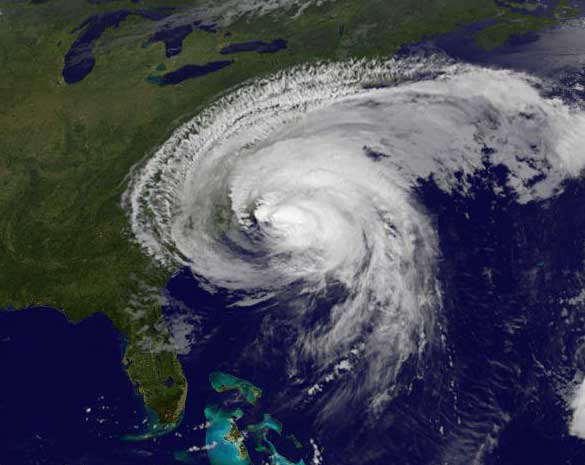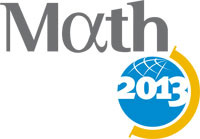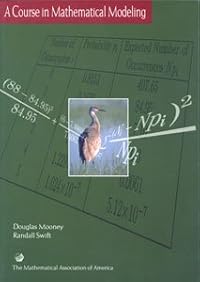- About MAA
- Membership
- MAA Publications
- Periodicals
- Blogs
- MAA Book Series
- MAA Press (an imprint of the AMS)
- MAA Notes
- MAA Reviews
- Mathematical Communication
- Information for Libraries
- Author Resources
- Advertise with MAA
- Meetings
- Competitions
- Programs
- Communities
- MAA Sections
- SIGMAA
- MAA Connect
- Students
- MAA Awards
- Awards Booklets
- Writing Awards
- Teaching Awards
- Service Awards
- Research Awards
- Lecture Awards
- Putnam Competition Individual and Team Winners
- D. E. Shaw Group AMC 8 Awards & Certificates
- Maryam Mirzakhani AMC 10 A Awards & Certificates
- Two Sigma AMC 10 B Awards & Certificates
- Jane Street AMC 12 A Awards & Certificates
- Akamai AMC 12 B Awards & Certificates
- High School Teachers
- News
You are here
MAA and Mathematics of Planet Earth 2013
MAA and Mathematics of Planet Earth 2013

Source: NASA

MAA is a participating partner in Mathematics of Planet Earth 2013, a year-long program to publicize and promote the role of mathematics in developing a better understanding of dynamic processes affecting Planet Earth, ranging from geophysical systems governing climate to economic and financial activity.
The MPE 2013 effort will provide a platform to showcase the essential relevance of mathematics to planetary problems, encourage research to identify and address fundamental questions, coalesce activities currently dispersed among institutions, and create a context for mathematical and interdisciplinary developments that will be necessary to address myriad issues and meet global challenges in the future.
MAA Sections
Sections of the MAA are encouraged to include in their meeting programs for 2013 at least one invited speaker to touch on topics encompassed by the Mathematics of Planet Earth effort. They are also welcome to designate contributed papers and other program elements as part of MAA's contribution to MPE 2013. The Intermountain Section and others have already started to consider whom to invite for their meetings in 2013.
MAA Journals
Submissions are sought for the November 2013 issue of The College Mathematics Journal (CMJ), which will be devoted to the Mathematics of Planet Earth. Papers submitted should address the mathematical aspects of any of the innumerable issues affecting the earth. Potential areas for submissions include climate, meteorology, ecology, epidemiology, resource management, and biodiversity. Also of interest are areas of human interaction with the earth, including, but not limited to, economics, finance, politics, communication, sustainable development, and disaster management.
In addition to articles, Classroom Capsules, Student Research Projects, and other kinds of submissions are welcome. This page has more about these items and more about writing for CMJ in general. To avoid duplication of effort, authors are encouraged to write the editor of CMJ describing their proposed paper. Final submissions must be received by December 1, 2012, to be assured of consideration.
MPE 2013 Events at JMM
Mathematics of Planet Earth 2013 kicks off at the 2013 Joint Mathematics Meetings in San Diego, California, January 9-12, 2013
MAA-AMS-SIAM Gerald and Judith Porter Public Lecture: Kenneth Golden (University of Utah) on "Mathematics and the Melting Polar Ice Caps"
AMS-MAA Joint Invited Address: Emily Shuckburgh (British Antarctic Survey and Cambridge University)
MAA-AMS-SIAM Invited Paper Session: "Energy, Population, and Sustainability"
Organized by Ben Fusaro (Florida State University) and Fred Roberts (Center for Discrete Mathematics and Theoretical Computer Science, Rutgers University)
This session will focus on the role of the mathematical sciences in addressing the issues facing the Earth. It will consist of talks outlining mathematical approaches to the problems of the planet, as well as talks on how we can bring such topics into the mathematics classroom to engage our students in working to solve them.
Sponsors: MAA, AMS, SIAM, SIGMAA EM, and MPE 2013
Tentative List of Speakers: Fred S. Roberts (DIMACS, Rutgers University), Abdul-Aziz Yakubu (Howard University), Ben Fusaro (Florida State University), Roland Lamberson (Humboldt State University), Paul Ehrlich (Center of Conservation Biology, Stanford University) Mary Lou Zeeman (Bowdoin College), Steve Sain (National Center for Atmospheric Research), Suzanne Lenhart and Louis Gross (National Institute for Mathematical and Biological Synthesis, University of Tennessee, Knoxville), Marty Walter (University of Colorado Boulder).
MAA Contributed Paper Session: ’Integrating the Mathematics of Planet Earth 2013 in the College Mathematics Curriculumâ?
Organized by Ben Galluzzo (Shippensburg University)
In support of MPE 2013, this session seeks proposals that discuss methods for integrating Environmental Mathematics issues into the typical college curriculum. Accepted papers will be published on the SIGMAA EM website to increase awareness and encourage conversation about theme-related topics throughout the year. Sponsored by the SIGMAA on Environmental Mathematics and MPE 2013.
Proposals are due September 25, 2012
MAA Short Course: ’Conceptual Climate Modelsâ?
Organized by Anna Barry (Institute for Mathematics and its Applications), Hans Kaper (Georgetow University), Richard McGehee (University of Minnesota), Samantha Oestreicher (University of Minnesota), Esther Widiasih (University of Arizona), and Mary Lou Zeeman (Bowdoin College). Sponsored by MPE 2013.
In this two-day short course, the presenters will introduce various conceptual models of the Earth's climate system. The first day will be devoted to Energy Balance Models (EBMs)’differential equations that express the physical law of energy conservation in mathematical terms. It will be shown how the models can be modified to include the effects of greenhouse gases and the ice-albedo feedback mechanism. The second day will be devoted to paleoclimate studies. It will be shown how observational data from the paleoclimate record and computational data from simulations of the Earth's orbit during the Pliocene and Pleistocene can be incorporated into EBMs.
During the two-day course, participants will have the opportunity to conduct hands-on simulations with models to explore the interplay between energy balance, ice-albedo feedback, Milankovitch cycles in Earth's orbit, and other feedback mechanisms. This will build insight into which features of the paleoclimate record can be explained by the dynamics of low-dimensional conceptual models. Modules for bringing the material into a range of core undergraduate mathematics classes will be provided.
Undergraduate Student Poster Session
MPE-themed research will be highlighted within this event.
MAA Books
 | Mathematical Modeling in the Environment by Charles Hadlock MAA Textbooks, 312 pp., Paperbound, 1998 ISBN: 978-0-88385-709-0 Member Price: $52.95 | Buy in MAA Store Based on the author's environmental and risk consulting experience with the firm of Arthur D. Little Inc., this book takes three key environmental issues and shows how mathematical modeling is used routinely in the real world to investigate them. These three issues are groundwater contamination, air pollution, and hazardous materials accidents. There is an elementary and an advanced chapter on each of these topics, readily separable to allow this book to be used with different audiences. The book is heavily illustrated, and the problems reflect the kinds of issues encountered in practice. There is a highly interdisciplinary tone throughout with necessary background introduced as needed. |
|
|
Supplementary Material & Solutions Manual for Mathematical Modeling in the Environment 150 pp., Paperbound, 1998 ISBN: 978-0-88385-713-7 Member Price: $16.95 | Buy in MAA Store |
| A Course in Mathematical Modeling by Douglas Mooney and Randall Swift MAA Textbooks, 500 pp., Paperbound, 1999 ISBN: 978-0-88385-712-0 Member Price: $52.95 | Buy in MAA Store This book is intended as a text for a modeling course accessible to students who have mastered a one-year course in calculus. Mooney and Swift present a unique approach to modeling. It balances theoretical versus empirical models, analytic models versus simulation, deterministic versus stochastic models, and discrete versus continuous models. Examples are drawn from real-world data or from models that have been used in various applied fields. | |
 |
Environmental Mathematics in the Classroom, B. A. Fusaro and P. C. Kenschaft, Editors. Classroom Resource Materials, 268 pp., Paperbound, 2003 ISBN: 978-0-88385-714-4 Member Price: $46.00 | Buy in MAA Store This collection of articles highlights the role of mathematics in solving and illuminating pressing environmental challenges. It does so at an elementary level, demonstrating a wide variety of significant environmental applications that can be explored without resorting to calculus. Topics include ground-level ozone, pollution and water use, preservation of whales, mathematical economics, the movement of clouds over a mountain range, population models, the spread of infections, the survival of buffalo after the 19th century slaughter, groundwater dissipation, and the cleaning up of oil spills. |
MAA 2013 Mathematical Study Tour: Alaska's Inside Passage, July 9 - 17, 2013
The MAA is offering the perfect trip for the Mathematics of Planet Earth 2013 initiative - a small ship cruise of Alaska's inside passage. Travelers will get up close to thundering tidewater glaciers and see stunning wilderness and wildlife through the eyes of expert naturalists, Expedition Leaders, and First Nations interpreters. Embarking from Sitka, Alaska, the itinerary includes Glacier Bay National Park, Juneau, the state capital, and out-of-the-way exclusive places like Hobart Bay. Evening programs will explore the challenges of educating the population spread across the largest state in the Union and provide resources for teaching about native Alaskan mathematics. For more information, visit /studytour/
Other Activities
Enter the competition to create an interactive module, film, or illustration(s) for an open-source, virtual exhibition as part of Mathematics of Planet Earth 2013.







